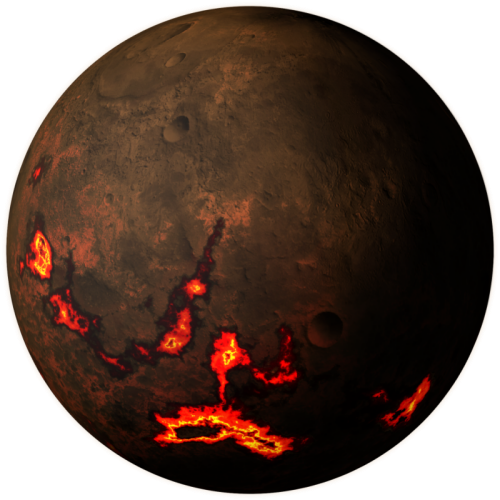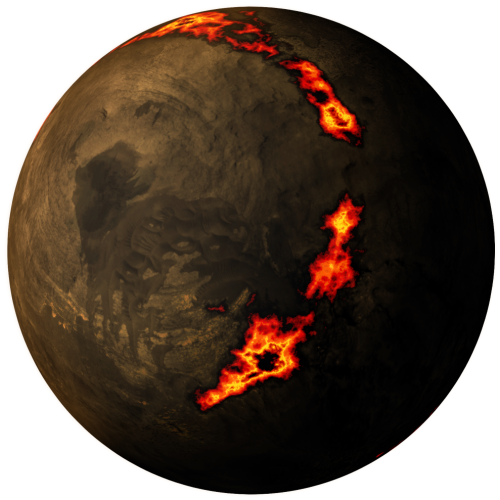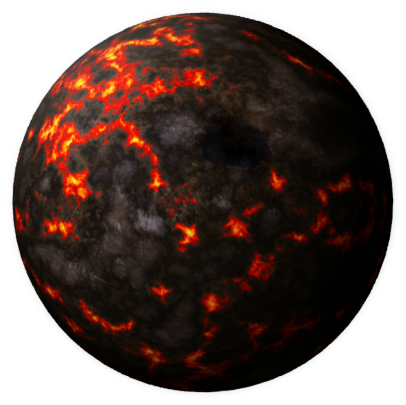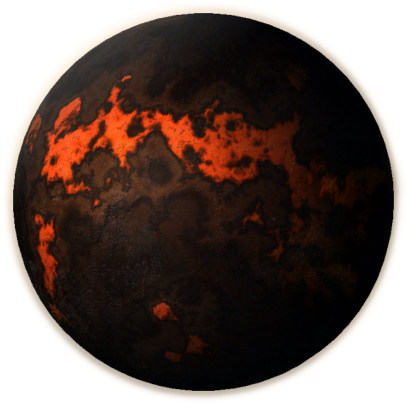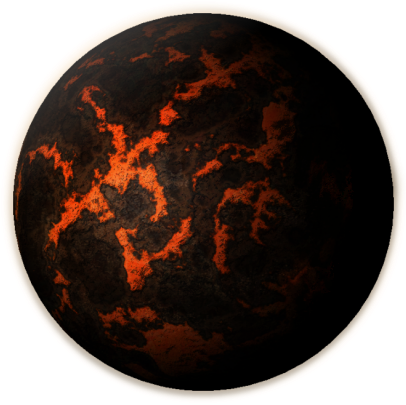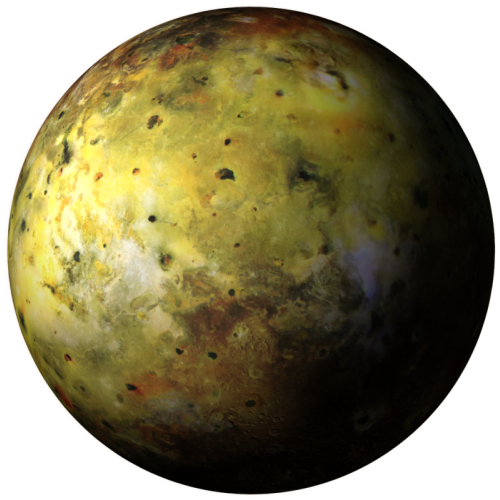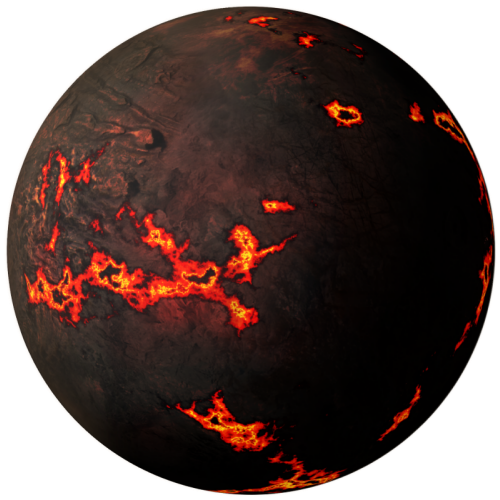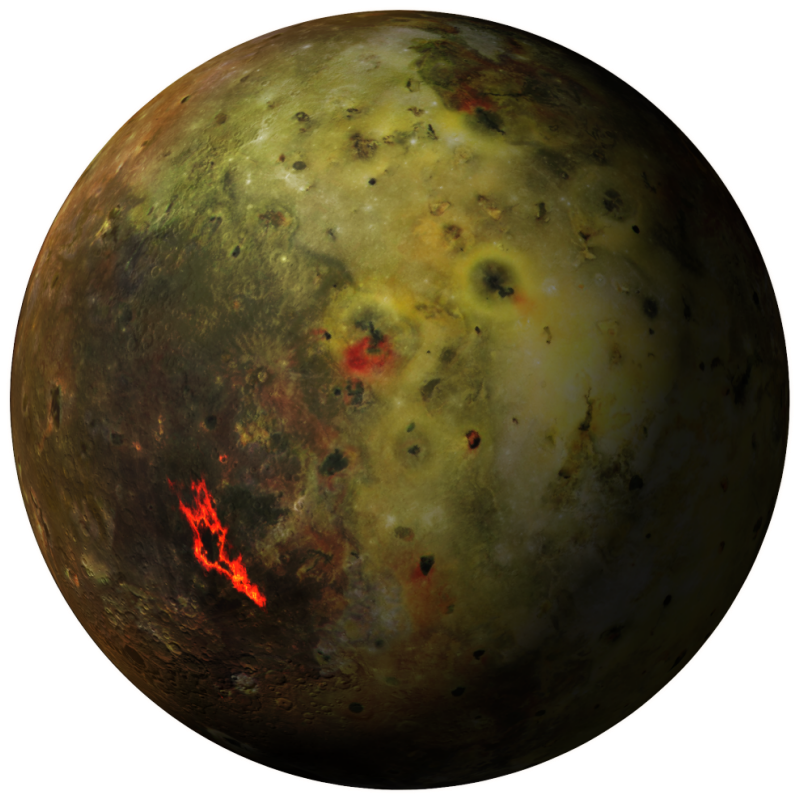
Class A planets are generally young, rocky worlds that are rife with
volcanic activity. This volcanic activity spews vast amounts of sulfur
and carbon dioxide into the atmosphere, causing a greenhouse
effect that keeps temperatures relatively hot. Planets in a star
system's hot zone may have worldwide temperatures in excess of
1500° C. Due to the tenuous nature of the atmosphere, planets in
the cold zone do not retain as much heat, and while temperatures
might approach 1000° C near volcanoes, the average temperature
may be as low as -130° C. This combination of extreme temperature
and tenuous, toxic atmosphere make Class A worlds highly
unfavorable to life of any kind.
When this extreme volcanic activity eventually ceases, the planet
"dies" and becomes a Class C: Geoinactive world.
Class A planets are common in the universe; Jupiter's moon Io is a
prime example.
volcanic activity. This volcanic activity spews vast amounts of sulfur
and carbon dioxide into the atmosphere, causing a greenhouse
effect that keeps temperatures relatively hot. Planets in a star
system's hot zone may have worldwide temperatures in excess of
1500° C. Due to the tenuous nature of the atmosphere, planets in
the cold zone do not retain as much heat, and while temperatures
might approach 1000° C near volcanoes, the average temperature
may be as low as -130° C. This combination of extreme temperature
and tenuous, toxic atmosphere make Class A worlds highly
unfavorable to life of any kind.
When this extreme volcanic activity eventually ceases, the planet
"dies" and becomes a Class C: Geoinactive world.
Class A planets are common in the universe; Jupiter's moon Io is a
prime example.
